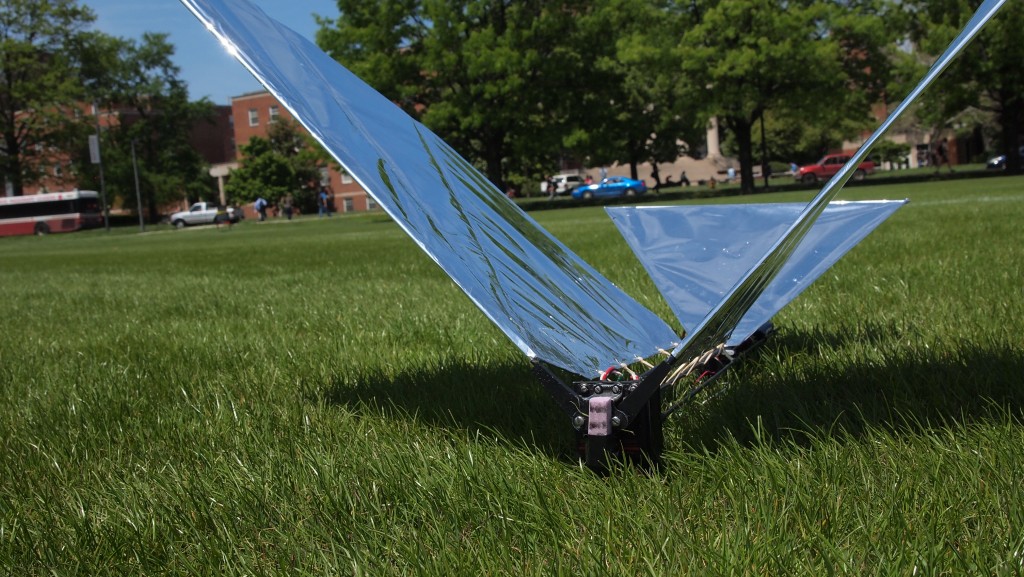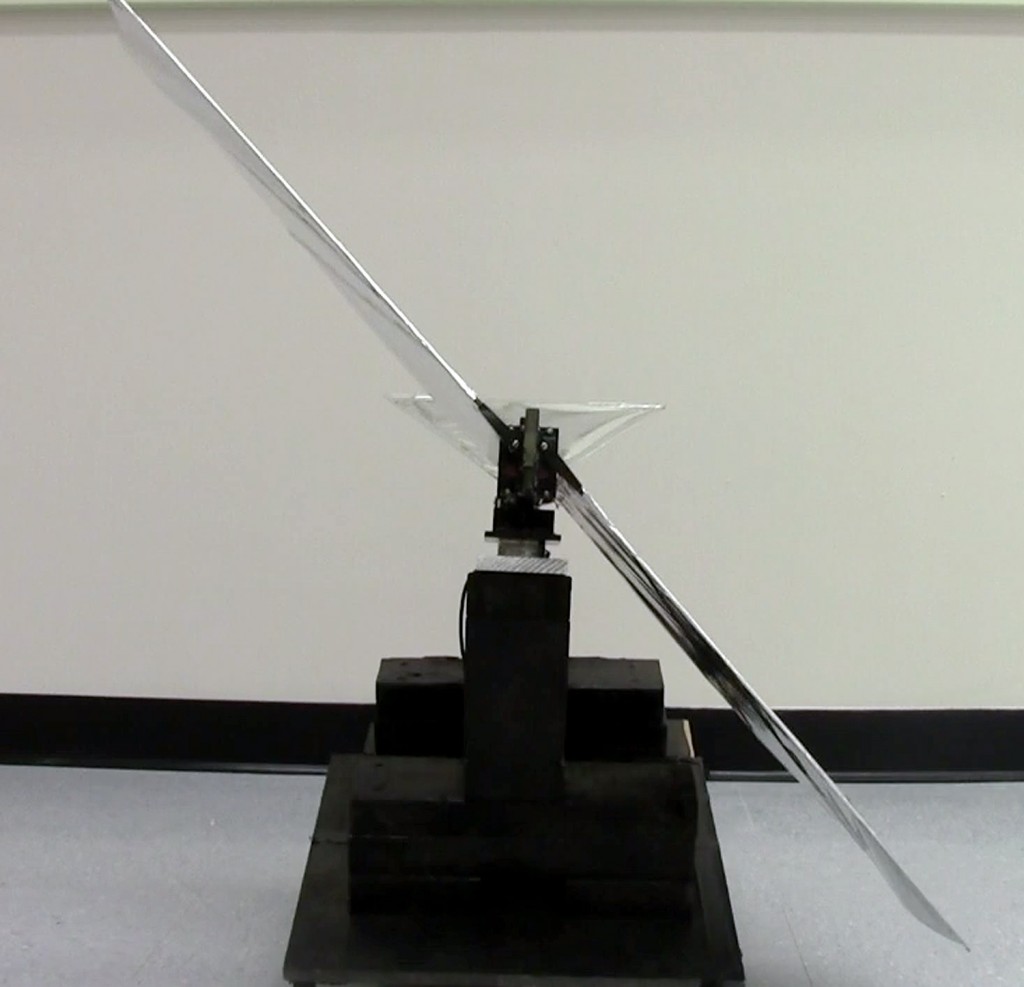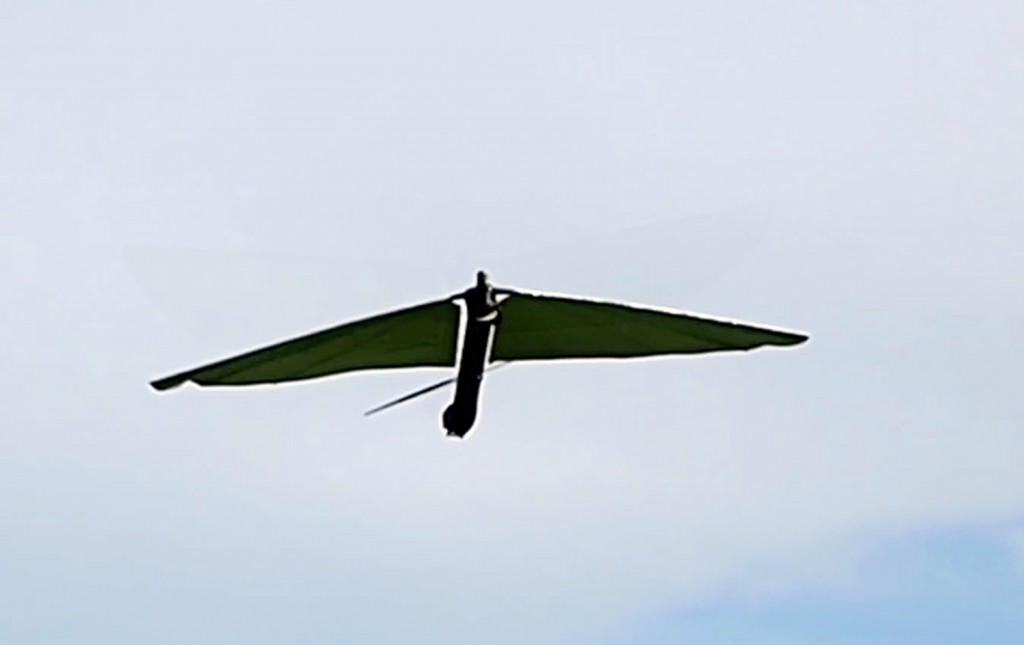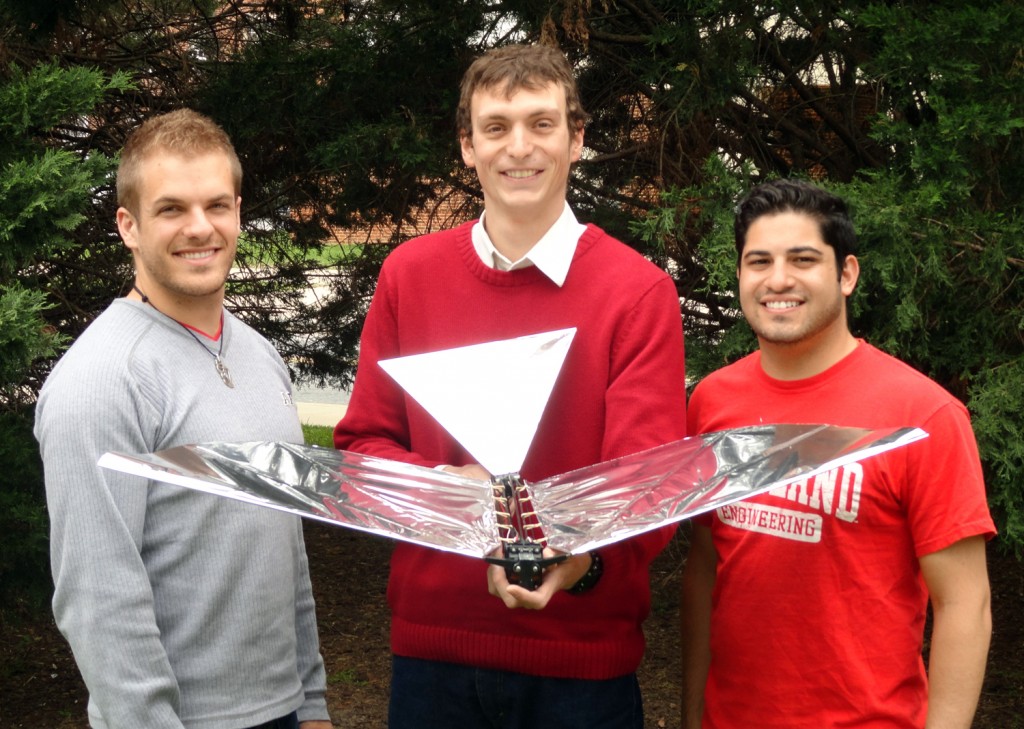SK Gupta’s research group at the University of Maryland has been building robotic bird MAVs (micro-air vehicles) for the last eight years. Gupta is collaborating with Hugh Bruck, a faculty member at the university, and graduate students Luke Roberts, John Gerdes, and Ariel Perez-Rosado on a new design. These students have been working tirelessly to get this latest robotic bird concept, called Robo Raven, to take off. Robo Raven is the first robotic bird with complete control over each individual wing, enabling it to do crazy acrobatics like back flips, dives, and rolls, previously not possible with flapping wing MAV platforms.
This has been an incredibly difficult problem to solve because controlling each wing separately requires two motors and a larger LiPo battery which, in the past, have made robotic birds too heavy to fly. Gupta’s group used new manufacturing technology like laser cutting and 3D printing to create lightweight and geometrically complex Delrin™ and ULTEM (high quality lightweight nylon) parts for the bird’s body. The bird has an onboard Arduino™ microcontroller used to program wing motions which can be either coupled or completely separate, allowing programmable wing motion profiles to ensure the wings maintain the right speed to generate the right balance between lift and thrust forces. These forces are measured using a custom built test stand with a 6 degree of freedom load cell to measure the forces and torques acting on the bird simultaneously. The team also performed system level optimization to make sure all the components worked well as an integrated system. Each of these aspects were key in making Robo Raven light enough to fly.
One of the coolest things about this new robotic bird is that real birds actually mistake it for one of their own. A hawk apparently felt threatened by it and attacked Robo Raven (see 1:50 in the video) and other birds even flew in formation with (see 1:58). Though Gupta’s group wasn’t as focused on making it look so much like a bird, it was definitely a really cool result of the research.
Robotic bird MAVs will offer advances in many different applications like agriculture, where it can be used as a mobile scarecrow and monitor crops; environmental monitoring; and surveillance. Robo Raven presents a fundamentally new platform for flapping wing MAVs and is a big step in realizing true bio-inspired robotics.







Nice infromation, keep us posted.
what a load of rubbish, it looks nothing like a bird and there are rc model planes/jets/pulsejets helicopters that birds go after, heck, even had one go after a small rc car! Change the headline as it’s full blown made up malarkey…
AMAZING!!! YOU GO GUYS
The statement, “Robotic Bird Is So Real It Got Attacked By A Real Hawk” is just another ridiculous attempt at media sensationalism.
To say that real birds actually mistake it for one of their own is a bit overzealous. Birds are curious about anything flying in “their” airspace and will investigate, play with, fly in formation, and even attack just about anything that flies in their aerial playground. I have been flying remote controlled aircraft and UAV’s for more almost 2 decades. I’ve flown everything from micro aircraft weighing in at less than 1 ounce to large scale aircraft spanning over 10ft. Every airplane, helicopter, gyro-copter and even ornithopter (such as the “robotic bird” in this article) that I have flown, has at one point or another, been the object of interest for curious birds. They will flit about in a playful manner, fly in formation and occasionally attack the aircraft. On a few such occasions the larger birds, such as hawks, have caused the loss of an aircraft due to their aggressive attacks disabling a crucial control surface.
This is not something new as it has been happening for as long as man has entered the sky. Birds will even fly with full size aircraft as well. It just so happens that most modern aircraft are simply too fast and fly at too high an altitude for birds to get near them. However, the slow, low flying airplanes of days past were routinely investigated by birds. Today, people flying in ultra-lights, para-sails, hang-gliders etc. often find the companionship of birds as well.
I’m not trying to discount the actual research and development of this MAV as it is truly a great step forward in flapping wing flight. The independent wing control and maneuverability of this model are amazing and I’m excited to see more advancements in the future.
its amazing and appreciated, keep sharing in future too.